The Martian starring Matt Damon is now playing in theatres to mainly positive reviews — with some exceptions (including a negative review from our own Elliott Burton). Whether you enjoy the film or not, it’s interesting to know how realistically the film portrays a human mission to Mars.
The film is based on the bestselling 2011 novel of the same name by software-engineer-turned-novelist Andy Weir about NASA astronaut Mark Watney, who becomes stranded on Mars and has to figure out how to survive using his MacGyver-like skills.
In his novel, Weir pleased science nerds everywhere with the book’s detailed mathematical calculations and scientific accuracy.
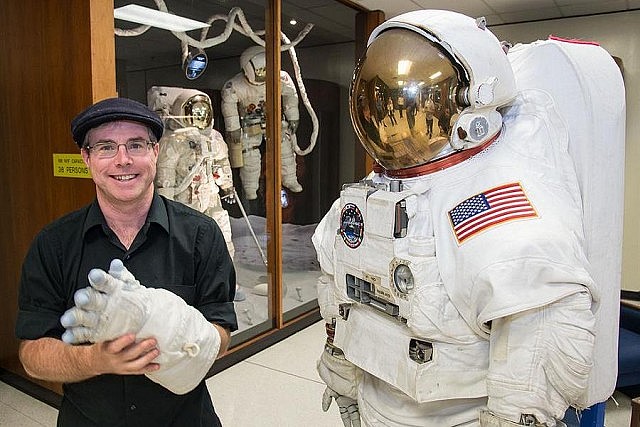
To maintain this accuracy in the film, Weir reviewed the drafts of screenwriter Drew Goddard and director Ridley Scott consulted with NASA throughout the production.
“I’m very happy with the adaptation,” Weir says. “They definitely care a lot about scientific accuracy.”
“For the most part, it’s all as accurate as we can possibly get it,” adds Scott. “That was refreshing, I loved it. I like to be restricted by the actual science of it.”
So how much of the film is actual science and how much is science fiction?
The science …
Travelling to Mars
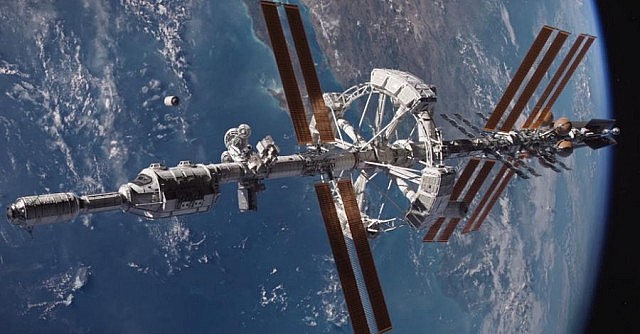
The film accurately portrays both how we’ll most likely get to Mars and the amount of time it’ll take to get there.
Unless we develop some new form of space travel, we’ll need to use unmanned vehicles to send habitats and food to Mars in advance of humans arriving there. We’ll also need to travel in a spaceship designed for long-term flight and we’ll need to descend to and ascend from the Martian surface in a separate vehicle. The film gets this right.
The film also accurately represents the brutal travel time to Mars: a one-way trip from Earth to Mars will take eight months.
“A lot of that stuff is actually very much in line with what our current thinking is right now about how you might structure a mission to Mars,” says Dave Lavery, NASA’s program executive for solar system exploration,
Growing food in Martian soil
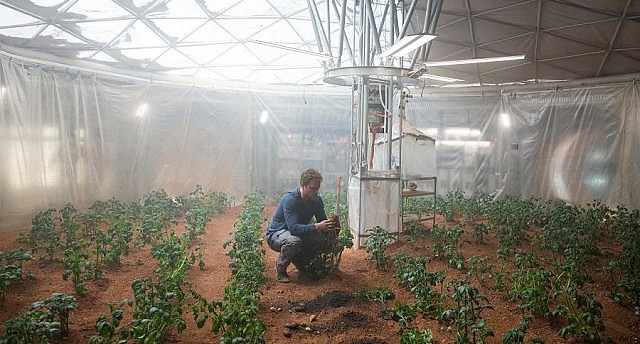
After becoming stranded on Mars, astronaut Mark Watney (who’s also a botanist and mechanical engineer) figures out how to grow potatoes in Martian soil.
Although you may think Martian soil would be sterile, it is possible to grow plants in it, in the right conditions.
“In terms of basic mineral content and chemical content, it would be possible to grow plants in Martian soil,” Lavery explains. “We actually have experiments going on right now using simulated Mars soil, and it indicates that’s a very realistic idea.”
Tornadoes on Mars
In the movie version, you see giant tornadoes on Mars (they don’t appear in the book).
While the Martian atmosphere is very thin, “dust devils” up to a kilometre tall can whip up debris on the surface. In 2005, the Spirit Mars rover captured one in action.
However, Martian dust devils aren’t quite as impressive as the tornadoes in the film.
Communicating with Earth
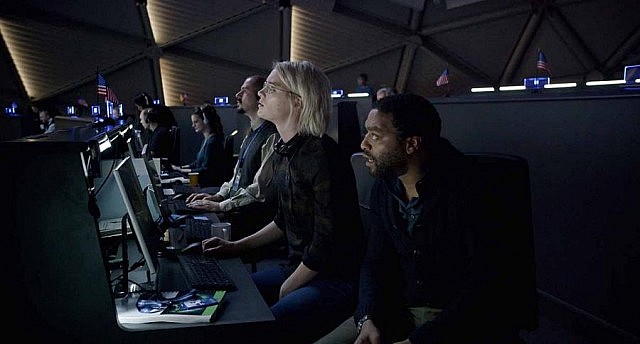
“Theoretically, it would absolutely be possible,” Lavery says (he worked on the Pathfinder mission). “The spacecraft has been sitting up there since 1997, and it stopped operating because the batteries finally drained and gave out. But if you replaced them and repowered it, everything else should still be functioning.”
The film also accurately represents (and explains) the time delay in communication between Mars and Earth due to the speed of light: 13 minutes and 48 seconds, which makes real-time communication impossible.
Mars habitat
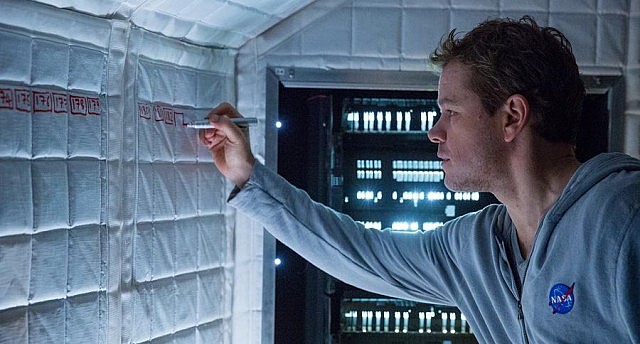
Using inflatable habitats on the Martian surface is based on science. NASA is seriously considering using them in space exploration (in fact, an inflatable module is going to be attached to the International Space Station).
However, there would be some challenges using inflatable habitats on Mars as they are portrayed in the book and the film.
Their human inhabitants would need to be protected from cosmic radiation (covering the habitats with Martian soil is one possibility). Using current materials, the habitats would likely burst due to the difference between the Earth-like atmosphere inside the habitat and the low-pressure Mars atmosphere outside.
Scientists and astronauts
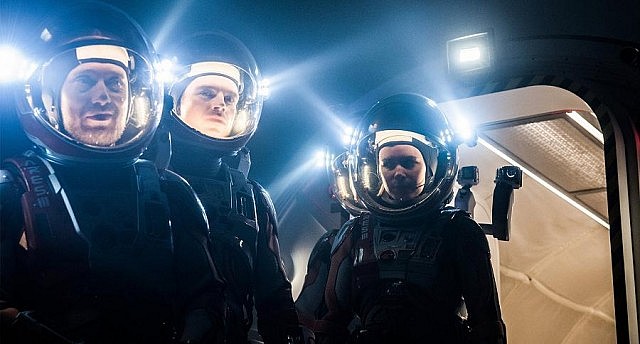
Both the film and the book accurately portray how scientists and astronauts actually work. The banter, sarcasm, and joking between the crew members and between NASA staff is an accurate depiction of how they relieve stress and tension during missions.
“I’m very excited about the way that the relationships between the astronauts were portrayed,” former astronaut Mike Massimino says. “Between adventure training, survival school, and getting thrown into extreme environments together, astronauts build up a strong bond.”
The motivation of NASA and Watney’s fellow astronauts to rescue him are also accurately portrayed.
“We take care of each other as best we can,” says Massimino. “When someone needs someone, there’s nothing we wouldn’t do.”
Watched @MartianMovie on @Space_Station last night! Today working towards our #JourneyToMars during my #YearInSpace! pic.twitter.com/rIEBjFxRIr
— Scott Kelly (@StationCDRKelly) September 20, 2015
The fiction …
The dust storm
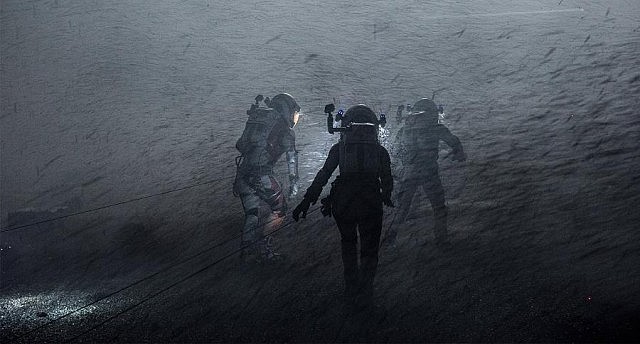
Although Mars has dust storms, the Martian atmosphere is so thin that the winds would have no real force — certainly not enough to lift anything off the surface and fling it about. The force of a strong wind on Mars is equivalent to a summer breeze on Earth.
“We do have 100-mile-an-hour dust storms on Mars but they have the inertia and the dynamic pressure associated with an 11-mile-an-hour wind on Earth,” Lavery says. “So you wouldn’t get that level of damage, or big pieces flying through the air, causing all these events to happen.”
Author Weir knew this wasn’t possible, but he needed a dramatic event to launch the story.
“I deliberately sacrificed reality for drama with the dust storm,” he explains. “In a man-versus-nature story, I decided I wanted nature to get the first punch in. Plus, I thought the storm would be pretty cool.”
According to Lavery, there’s evidence real Martian dust storms do generate another danger: lightning. Weir didn’t know that when he wrote the book, and he says he would have used that as the dramatic event instead of a dust storm.
The psychological impact of isolation
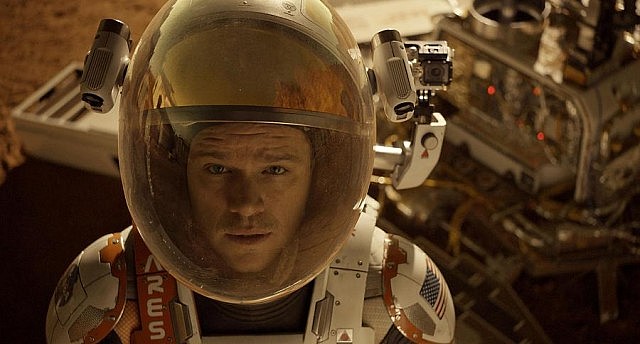
In the movie, Watney is trapped on Mars for seven months (in the book, he’s trapped there for almost two years). During much of the time, he isn’t communicating with people on Earth.
Being isolated for that amount of time — especially in a hostile environment with little hope of rescue — would almost certainly cause severe psychological impact.
Weir says this is why he made Watney’s personality very optimistic and with a goofy sense of humour.
Cosmic radiation
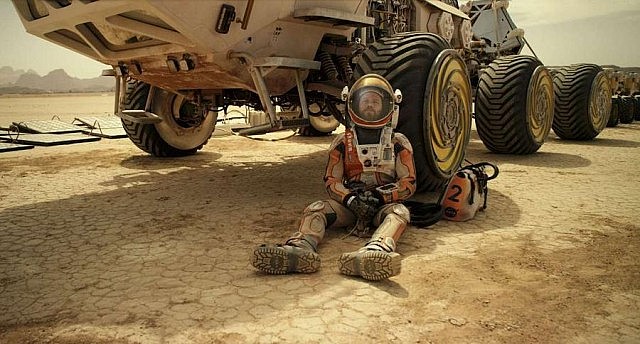
Because of Mars’ thin atmosphere, the surface is exposed to dangerous levels of cosmic radiation. Spending many months on the surface of Mars would greatly increase the risk of radiation sickness, and eventually cancer, for unprotected humans.
For long-term stays on Mars, habitats would either need to be placed underground or covered with Martian soil to block the radiation. For the length of time he was exposed on the surface, Watney wouldn’t probably experience any immmediate health effects from radiation exposure — but they’d develop later.
“The other deliberate thing I did was to basically hand-wave around radiation issues,” says Weir. “That’s actually one of the biggest challenges to sending a manned mission to Mars. I just said that in the intervening time they’d invented some kind of material that takes care of it.”
Gravity on Mars
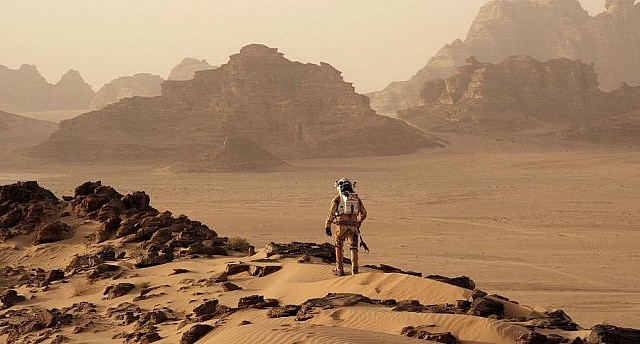
While he’s on Mars, Watney moves around in the same way he would on Earth. But Mars only has about a third of the gravity of Earth, so in reality an astronaut on Mars would shuffle and hop to get around.
Untethered space walks
The film includes some scenes where astronauts aren’t tethered during space walks. While “jet packs” are available to allow astronauts to do this, NASA doesn’t like to use them as the risk to astronauts is too great.
The Radioisotope Thermoelectric Generator
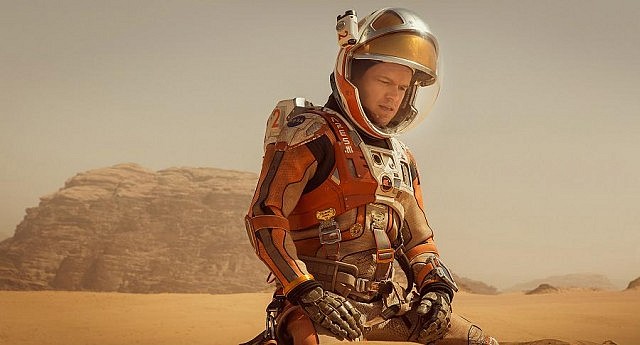
At one point, Watney needs to dig up a Radioisotope Thermoelectric Generator (RTG), previously buried under the Martian surface to protect the crew from radiation exposure.
While RTGs exist (the Curiosity rover on Mars uses one), NASA would never bury one in the Martian soil for the same reason we wouldn’t do this on Earth: the plutonium inside the RTG would make the Martian soil and any water radioactive for a long time.
Leaving Mars
To leave Mars, the crew uses the Mars Ascent Vehicle to accelerate to orbital velocity and rendezvous and dock with the Hermes spacecraft.
While using a separate is indeed how humans would need to get off the surface of Mars, NASA doesn’t know how to do it yet — putting the idea in the realm of fiction rather than science.
“Taking off from Mars is one of the biggest problems we’re working on right now,” Lavery admits.
All photos courtesy of 20th Century Fox except where noted



























